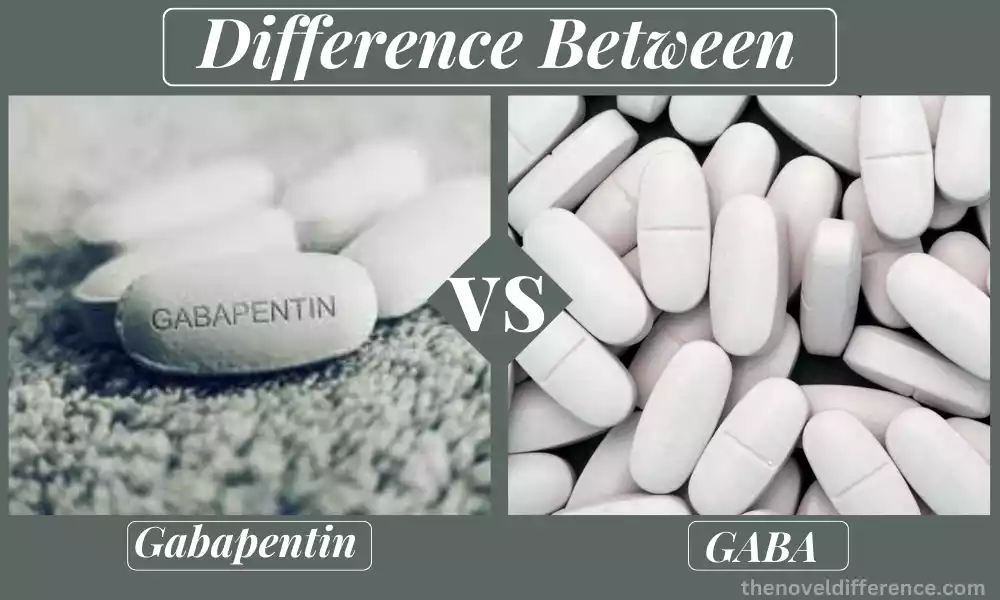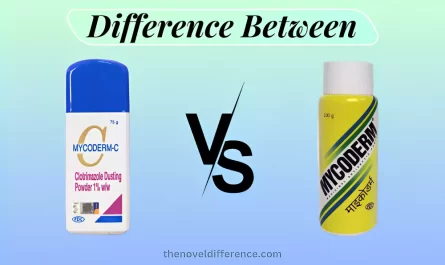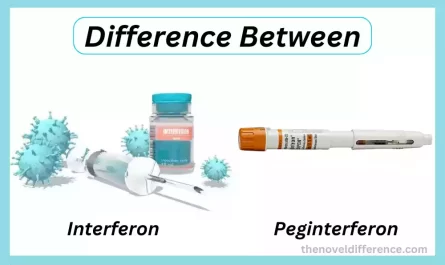Definitions of GABA and Gabapentin
GABA: GABA is an inhibitory transmitter in the central nervous (CNS). It transmits signals between nerve cells. As its name implies, GABA helps reduce activity among neurons to promote relaxation while inhibiting excessive excitability; its primary goal is balancing out neuronal excitation with inhibition to ensure healthy brain functioning.
Gabapentin: Gabapentin is an anticonvulsant and analgesic medication that affects GABA activity within the brain in order to treat seizures and neuropathies. Gabapentin works by binding to certain brain regions known as alpha-2-delta subunits of voltage-gated calcium channels.
By binding these subunits, gabapentin inhibits several excitatory neurotransmitters (such as glutamate) while simultaneously augmenting GABA’s effects.
Gabapentin can help prevent seizures and reduce pain signals associated with conditions such as postherpetic neuralgia (nerve pain after shingles) and diabetic neuropathy, while sometimes off-label use includes restless leg syndrome or migraines.
Gabapentin should be seen as an enhancer to GABA rather than its replacement; rather it mimics some actions associated with it but has distinct pharmacological properties and mechanisms of action.
Importance of understanding the difference between GABA and Gabapentin
Understanding the difference between GABA and Gabapentin is crucial for several reasons:
- Medical Decision-Making: GABA and Gabapentin have distinct bodily and brain roles. Healthcare professionals need to differentiate between them to make informed decisions about treatment options. Acknowledging their mechanisms of action, indications and side effects will allow you to select the most suitable medication for any given condition.
- Treatment Selection: GABA and Gabapentin are used in different clinical settings. GABA is an endogenous neurotransmitter, while Gabapentin is a synthetic medication. Knowing the difference helps healthcare providers choose the proper treatment for conditions such as epilepsy, neuropathic pain, or anxiety disorders.
- Safety and Side Effects: GABA and Gabapentin have different safety profiles and potential side effects. GABA supplements are generally safe to take; however, their efficacy in crossing the blood-brain barrier remains controversial. Gabapentin can cause side effects including dizziness and fatigue; nonetheless, they should still be taken with caution. Understanding these differences helps healthcare professionals assess the risk-benefit ratio and monitor patients appropriately.
- Addiction Potential: While GABA itself is not associated with addiction or abuse potential, Gabapentin has been reported to have misuse and abuse potential, particularly when combined with other substances. Recognizing this distinction is crucial to identify individuals at risk and take appropriate precautions.
- Patient Education: Educating patients about their medications is essential for their active involvement in their treatment. By explaining the differences between GABA and Gabapentin, healthcare professionals can help patients understand the mechanism of action, expected outcomes, potential side effects, and proper usage, promoting adherence and better treatment outcomes.
- Future Developments: Research into GABA and Gabapentin is ongoing, and new discoveries may lead to advancements in their use. Staying informed about the differences between GABA and Gabapentin allows healthcare professionals to adapt their practices based on emerging evidence and incorporate new treatment options effectively.
Understanding the difference between GABA and Gabapentin is essential for medical decision-making, treatment selection, patient safety, and education. Healthcare professionals use it to deliver optimal care while staying current on developments within their fields of specialization.
GABA (Gamma-Aminobutyric Acid)
GABA (Gamma-Aminobutyric Acid), an essential neurotransmitter, is found in the brain as well as the central nervous system. It regulates neuronal activities by balancing brain function and regulating neuronal activation. Here are a few facts about this neurotransmitter.

1. Definition: GABA is an amino acid, specifically one classified as non-proteinogenic amino acid; this means it does not participate in protein synthesis and must be produced via GAD enzyme action on glutamate molecules.
2. Function: GABA functions primarily as an inhibitory neurotransmitter, meaning it lowers neuron activity to prevent excessive firing, helping the nervous system relax more comfortably while relieving anxiety. GABA plays an essential part in controlling excitability levels within our systems while encouraging relaxation and decreasing anxiety levels.
3. GABA Receptors and Neurotransmission: GABA exerts its effects by binding to specific receptors in the brain known as GABA receptors. There are two primary kinds of GABA receptors; GABA-A and GABA-B. GABA-A receptors are ion channels activated by GABA that, when stimulated by its binding sites, allow negatively charged chloride ions into neurons for inhibitory effects; GABA-B receptors modulate neuronal activity through complex signaling mechanisms, while GABA-A receptors serve ion channels that activate when activated by binding GABA to GABA-A receptors to give rise to inhibitory effects; both types serve varying effects in terms of neuronal activity via different signals than its binding sites.
4. Function in the Central Nervous System: GABA plays an essential part in several physiological processes throughout both brain and spinal cord regions, helping regulate anxiety, stress responses, motor control, sleep quality and memory while decreasing neuronal excitability.
5. Effects of GABA Deficit or Imbalance: Imbalanced GABA levels or dysfunction in GABA receptors have been linked with various neurological and psychiatric conditions, including anxiety disorders, epilepsy, insomnia and mood disorders. Reduced function or low GABA levels have been implicated as potential culprits behind anxiety disorders, epilepsy seizures insomnia mood disturbances
6. Natural Sources and GABA Supplements: GABA can be found naturally in fermented products like kimchi and yogurt; however, whether oral GABA supplements can increase brain GABA levels effectively to provide physiological effects remains under debate and requires further study.
Understanding GABA’s role in neurotransmission and maintaining neurological balance is integral to understanding various brain functions and associated disorders, with ongoing research seeking to deepen our knowledge about its therapeutic uses in future therapies.
Gabapentin
Gabapentin was initially developed to treat epilepsy, but it has been used for other medical conditions. Gabapentin is a medication that was originally developed to treat epilepsy. However, it has since been used for other medical conditions.

Background and Definition: Gabapentin was approved for the first time by the U.S. Food and Drug Administration in 1993, under the brand Neurontin. It was originally developed to treat epilepsy in both adults and children, especially as an adjunctive treatment for partial seizures.
Mechanism of action: The exact mechanism through which Gabapentin functions is not completely understood. It is thought to bind a specific subunit of voltage-gated Calcium channels (alpha2-delta), located in the central nervous. Gabapentin reduces the release of neurotransmitters, such as glutamate. This has antiepileptic, and analgesic, effects.
Gabapentin: Gabapentin is prescribed to treat a variety of medical conditions. It is used to treat neuropathic conditions such as diabetic neuropathy, nerve pain after shingles, and spinal cord injury-related neuropathic symptoms. Also, it may be prescribed to treat fibromyalgia and restless legs syndrome. It can also stabilize mood in bipolar disorder. Gabapentin can cause side effects, just like any other medication. Dizziness, drowsiness, and fatigue are common side effects. Consult a healthcare provider about possible drug interactions and cautions. This is especially important for individuals with impaired kidney function.
Potential for abuse and addiction: Although Gabapentin is not a controlled substance according to the U.S. Drug Enforcement Administration, there have been reports about Gabapentin misuse and abuse. This was especially true when Gabapentin was combined with other substances. Healthcare professionals should be aware of Gabapentin’s potential abuse and monitor their patients accordingly. Gabapentin is effective in treating epilepsy, neuropathic and psychiatric disorders. It is best to consult with a medical professional regarding the correct dosage, Gabapentin’s potential risks, and any other information. Individual responses and medical conditions can vary.
Comparison Between GABA and Gabapentin
It’s important to remember that GABA and Gabapentin are two distinct substances with unique characteristics. Here are some comparisons between GABA (Gamma-Aminobutyric Acid) and Gabapentin.
Composition and structure:
GABA: GABA is a neurotransmitter that is synthesized in the brain from glutamate. It is an amino acid that functions as a chemical messenger.
Gabapentin: Gabapentin is a synthetic substance that is not found in the human body naturally. It belongs to a class of anticonvulsant drugs known as gabapentinoids.
Mode of action and receptor interaction:
GABA: GABA is an inhibitory neurotransmitter that acts by binding to GABA-A receptors in the cerebral cortex. It interacts primarily with GABA-A ion channel receptors that regulate neuronal activities.
Gabapentin: While the exact mechanism by which Gabapentin works is unknown, it is believed to bind the alpha2-delta subunit of voltage-gated Calcium channels. This interaction modulates certain neurotransmitters that are involved in pain signals.
Gabapentin:
GABA is not commonly prescribed as a medicine. Some GABA analogs such as benzodiazepines are named because of their anxiolytic effects.
Gabapentin: Gabapentin can be prescribed to treat epilepsy and neuropathic conditions such as post-herpetic neuropathy or diabetic neuropathy. It can also treat other conditions such as fibromyalgia or restless leg syndrome.
Safety and side effects:
GABA: GABA occurs naturally in the body, and is considered to be safe. Oral GABA supplements are still debated as to whether they reach the brain and have significant effects.
Gabapentin may cause side effects such as dizziness, fatigue, and coordination problems. You should always follow the prescribed dosage and consult your healthcare professional about possible interactions and precautions.
Legal Status and Regulation:
GABA: GABA is not a controlled substance. Its supplements are available over the counter.
Gabapentin: Gabapentin, a prescription drug is subject to regulations due to the potential for abuse.
It is important for healthcare professionals, to ensure patient safety and maximize therapeutic outcomes, so they understand these differences. It is best to seek the advice of a medical professional regarding GABA and GABA analogs for certain medical conditions.
What are the similarities Between GABA and Gabapentin?
While GABA and Gabapentin are distinct entities, there are some similarities between them. Here are a few points of similarity:
- Neurotransmission Effects: Both GABA and Gabapentin have effects on neurotransmission in the central nervous system (CNS).
-
- GABA: As an endogenous neurotransmitter, GABA acts as an inhibitory neurotransmitter, reducing neuronal excitability.
- Gabapentin: Gabapentin affects neurotransmission by modulating the release of certain neurotransmitters involved in pain signaling.
- Medical Applications: Although their specific uses may differ, both GABA and Gabapentin have medical applications.
-
- GABA: GABA analogs, such as benzodiazepines, are prescribed for their anxiolytic and sedative effects in the treatment of anxiety disorders and certain neurological conditions.
- Gabapentin: Gabapentin is commonly prescribed for epilepsy and neuropathic pain conditions, such as diabetic neuropathy and post-herpetic neuralgia.
- Potential Role in Anxiety Regulation: GABA and Gabapentin have been implicated in anxiety regulation.
-
- GABA: GABA is known to have anxiolytic effects, and imbalances in GABA levels or function have been associated with anxiety disorders.
- Gabapentin: Although not fully understood, Gabapentin may exert anxiolytic effects, which can be beneficial in certain anxiety disorders.
- Interactions with GABA Receptors: Gabapentin has been shown to interact with GABA receptors in the CNS, albeit through a different mechanism compared to GABA itself.
-
- GABA: GABA directly binds to GABA receptors, primarily GABA-A receptors, and influences their activity.
- Gabapentin: Gabapentin’s interaction with GABA receptors is indirect. Binds to an alpha2-delta subunit of voltage-gated calcium channels to modulate neurotransmitter release that modulates neuronal activity.
It is important to note that while there are similarities, there are also significant differences between GABA and Gabapentin. Understanding these similarities and differences is crucial for appropriate use and effective management of medical conditions.
Consultation with healthcare professionals is recommended for accurate information and guidance tailored to individual circumstances.
GABA and Gabapentin Side-by Comparison in Tabular Form
Certainly! Here’s a side-by-side comparison of GABA and Gabapentin:
GABAGabapentin
| Definition | Endogenous neurotransmitter | Synthetic medication belonging to the class of anticonvulsants |
| Mode of Action | Binds to GABA receptors, primarily GABA-A receptors | Binds to the alpha2-delta subunit of voltage-gated calcium channels |
| Medical Uses | GABA analogs (e.g., benzodiazepines) prescribed for anxiety and certain neurological conditions | Primarily used for epilepsy, neuropathic pain, and other conditions like fibromyalgia |
| Safety Profile | Generally considered safe, but the effectiveness of oral GABA supplements is debated | Can cause side effects such as dizziness, drowsiness, fatigue, and coordination difficulties |
| Regulation | Not a regulated substance, supplements are widely available over-the-counter | Prescription medication is subject to regulation due to the potential for abuse and misuse |
| Natural vs. Synthetic | Endogenous neurotransmitter | Synthetic compound |
| Legal Status | Not a controlled substance | Not a controlled substance, but misuse and abuse have been reported |
| Potential for Addiction | Not associated with addiction or abuse | Misuse and abuse potential, particularly when combined with other substances |
| Interactions with GABA Receptors | Directly binds to GABA receptors (GABA-A and GABA-B receptors) | Indirectly interacts with GABA receptors through calcium channels |
| Primary Effects | Inhibitory neurotransmitter reduces neuronal excitability | Modulates release of neurotransmitters involved in pain signaling |
This tabular comparison highlights the similarities and differences between GABA and Gabapentin in terms of their nature, mechanisms of action, medical uses, safety profiles, regulation, and potential effects.
It’s important to note that this information is a general overview, and specific dosages, indications, and precautions should be discussed with healthcare professionals for accurate and personalized guidance.
Differences in Clinical Use
Absolutely! Below are the key differences in their clinical use: GABA and Gabapentin:
GABA as a medication: Due to being an endogenous neurotransmitter, direct administration or supplementation with GABA may not be as common.
GABA analogs such as benzodiazepines can provide effective anxiolytic and sedative therapies in treating anxiety disorders, insomnia, and neurological diseases.
GABAergic medications may be utilized as antiepileptics and muscle relaxants as well as for managing alcohol withdrawal symptoms.
Gabapentin: Gabapentin is commonly prescribed to treat epilepsy. Additionally, it may be utilized as a part of adjunctive therapies to control seizures – particularly partial seizures – more effectively.
Gabapentin has long been used as an effective treatment for various forms of neuropathic pain, such as diabetic neuropathy, postherpetic neuralgia, and peripheral neuropathy. Furthermore, gabapentin may also be prescribed for other conditions including
fibromyalgia, restless leg syndrome, and bipolar disorder as a mood stabilizer.
Gabapentin can also be prescribed off-label to treat migraine headaches, hot flashes, and anxiety disorders.
GABA analogs and Gabapentin each have specific clinical indications and approved uses; it’s best to seek medical advice regarding specific conditions before selecting treatment options for yourself or someone in your care.
Conclusion
GABA (Gamma-Aminobutyric Acid) and Gabapentin are distinct medications with various characteristics and clinical applications, making comparison difficult.
GABA or glutamic acid amide is an endogenous neurotransmitter produced naturally within our own bodies that serves as an inhibitory neurotransmitter in our brains, acting to control neuronal activity and maintain equilibrium for proper brain functioning.
While GABA itself may not often be prescribed, its analogs such as benzodiazepines may provide therapeutic benefits such as anxiety relief or treating specific neurological issues.
Gabapentin falls within the anticonvulsant medication class of synthetic medications, primarily treating epilepsy but may also assist in managing diabetic neuropathy or postherpetic neuralgia, restless leg syndrome, and mood-stabilizing bipolar disorders.




